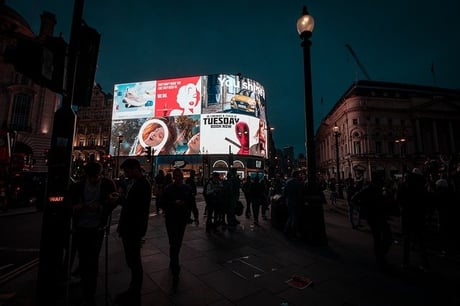Index Content
Native advertising is the use of paid ads that match the look, feel and function of the media format in which they appear. That is, native ads are often found on social networks or as recommended content on a web page, and, unlike display ads or banner ads, native ads don't really look like ads, so they are not disruptive. The content of the ads is powerful and thoughtful, and they can be viewed on any device.
what does native advertising look like?
- in-feed ads are the ads that appear in your news feed on social networks.
- search and promoted listings - thead listings that appear at the top of Google search results or in the sidebar
- content recommendations- these are recommended articles that appear below the article you have just read, offered by a content discovery platform.
what are the main advantages of native advertising?
- It will helpyou capture more traffic. This advertising format is ideal for capturing those who are tired of traditional advertising, and you will get more visibility.
- You will get more visibility. If the advertising is integrated, you will get more visibility.
- Better browsing experience. The simple fact of not interrupting the user's browsing experience creates a much more pleasant experience and, as a consequence, your reputation as a brand is improved.
- You will learn a lot about the interests of your potential audience, and through their reactions to your content, you will be able to adapt your strategy so that it has more potential.
- More entries at the top of the conversion funnel. Although native advertising is not focused on direct sales, it does manage to attract users in the stages of the funnel.

Best examples of native advertising
- gawker and Newcastle. In 2014, beer brand Newcastle surprised Gawker's audience with an article titled "We've disguised this Newcastle ad as an article to get you to click on it". This piece of native advertising uses irony constantly to explain that the brand has decided to cut its advertising budget and invest it in paying for what is stated in the article.
- patrón Tequila: For International Margarita Day on 22 February, the Patrón brand launched a hashtag on Twitter promoting #MargaritaoftheYear, calling on its audience to vote for one of the 7 innovative cocktail recipes that had been created. In this way, it not only managed to generate engagement, but also to involve its audience, gain visibility, attract new users and, in addition, achieve a certain virality.
- general Electric: General Electric's (GE) 8-week podcast series, "The Message", is a great example of native advertising. The piece deals with different aspects of sound technology through a sci-fi narrative. It revolves around a novice podcaster and a group of cryptographers deciphering an ominous message from space. The podcast achieved media acclaim. But it also won the 2016 Webby Award for Best Use of Native Advertising.

- the Onion and Starbucks: The Onion is a well-known US newspaper that specialises in ironic news stories. Starbucks has been the victim of irony on more than one occasion. The good thing about Starbucks is that it never took the jokes badly and was able to take advantage of The Onion's pull to launch an article that would actually end up benefiting it. The report told the story of the benefits of the famous coffee through irony .
- the New York Times and Netflix: In August 2014, The New York Times published a lengthy article on the many problems faced by women in prison and possible reforms to the prison system. This piece of investigative journalism addressed the different needs of men and women in prison. It was a very comprehensive report, almost 1500 words long and accompanied by graphics, audio and video. In reality, the article was an advertisement paid for by the producers of Orange is the New Black, a TV series set in a women's prison.
- bBC: The BBC company has a kind of mural on its website that functions as its advertising space. In this way, if the user is interested in one of the advertisements, he clicks on it, and is redirected to another link (still within the BBC domain), where he has access to the content of the advertisement. Therefore, the advertising company generates a link of association with the medium in which it promotes its brand, which guarantees it respectability before the public once it is associated with one of the most revered newspapers in the world.





